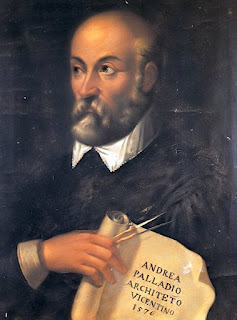Risorgimento novel now seen as an overlooked classic
The writer Ippolito Nievo, a passionate supporter of the move to unify Italy in the 19th century, was born on this day in 1831 in Padua.
Nievo, whose posthumously published Confessions of an Italian is now considered the most important novel about the Risorgimento in Italian literature, drew inspiration from his participation in Giuseppe Garibaldi’s Spedizione dei Mille - the Expedition of the Thousand.
 |
| Ippolito Nievo fought for a united Italy |
They also had use of his mother’s ancestral home, a castle in Colloredo
di Montalbano, a hamlet just outside the city of Udine in Friuli-Venezia
Giulia, and of the Palazzo Nievo in Mantua.
From 1832 to 1837, when Nievo was a small child, they lived in a house
adjoining the Palazzo della Giustizia in Soave, about 60km (37 miles) from
Padua, where his father was posted as a judge.
By the late 1840s, Nievo was becoming increasingly fascinated by the
writings of Carlo Cattaneo and Giuseppe Mazzini, two of the central
philosophical drivers of the Risorgimento.
He is thought to have taken part in a failed uprising in Mantua in 1848,
a year marked by a series of insurrections inspired by Italian nationalists seeking
to overthrow the Austian grip on the north of the country.
He had been inspired by conversations with his maternal grandfather,
Carlo Marin, who had been a prominent official of the Venetian Republic when it
fell to the Austrians in 1797.
Nievo refused to follow his father into the law as he felt it would
imply submission to the Austrian government and instead pursued a career in
journalism.
In the 1850s he retreated to Colloredo di Montalbano, where he wrote a number of novels set in the Friulian countryside, as well as volumes of short stories and poetry.
 |
| Most important novel about the Risorgimento |
Carlo’s twin passions are the dream of a unified, free Italy and his
undying love for Pisana, the woman with whom he is obsessed. With characters
ranging from drunken smugglers to saintly nuns and scheming priests, as well as
real figures such as Napoleon and Lord Byron, it is an epic novel that tells the
remarkable and inseparable stories of one man's life and the history of Italy's
unification.
Nievo embarked from Genoa on 5 May, 1860 setting sail for Sicily. After
distinguishing himself in the battle of Calatafimi and in Palermo, he was
promoted to colonel and took on administrative assignments, at the same time
keeping diaries that served as a chronicle of events.
It was in this role that he was tasked with bringing back from Sicily
all the administrative documents and receipts from the expedition’s expenses.
He boarded the steamship Ercole along with other members of the military
administration to travel from Palermo to Naples, but during the night between
March 4 and 5, 1861, the steamship ran into difficulties off the coast of Sorrento,
almost within view of the Bay of Naples, and sank. There were no
survivors.
Nievo’s life is commemorated in a number of locations, including
Colloredo di Montalbano and Fossalta di Portogruaro, in the Veneto, where the
Castello di Fratta, the scene of Carlo Altoviti’s unhappy childhood, was
thought to be located.
Colloredo di Monte Albano - known locally as Colloredo di Montalbano -
is a small village in Friuli-Venezia Giulia situated about 14km (9 miles)
northwest of Udine. In the 11th century, it was a fief of the Viscounts
of Mels, who had received it from the Counts of Tyrol. In 1420, together with
all of Friuli, the hamlet was acquired by the Republic of Venice. The hamlet was
severely damaged by the Friuli earthquake in 1976, yet the family castle remains
intact.
Nievo’s legacy is preserved in his novel, in which the central character
and narrator shares Nievo’s passions. Nievo completed the work in 1858 but it
was not until 1867, six years after his death, that it was published.
When Nievo’s supporters first found a publisher the book was titled
Confessioni di un ottuagenario (Confessions of an octogenarian), because
Nievo’s intended title was still deemed politically sensitive. It was changed
later to reflect the author’s wishes.
Nievo died for the cause he believed in passionately, at the age of
just 29.



